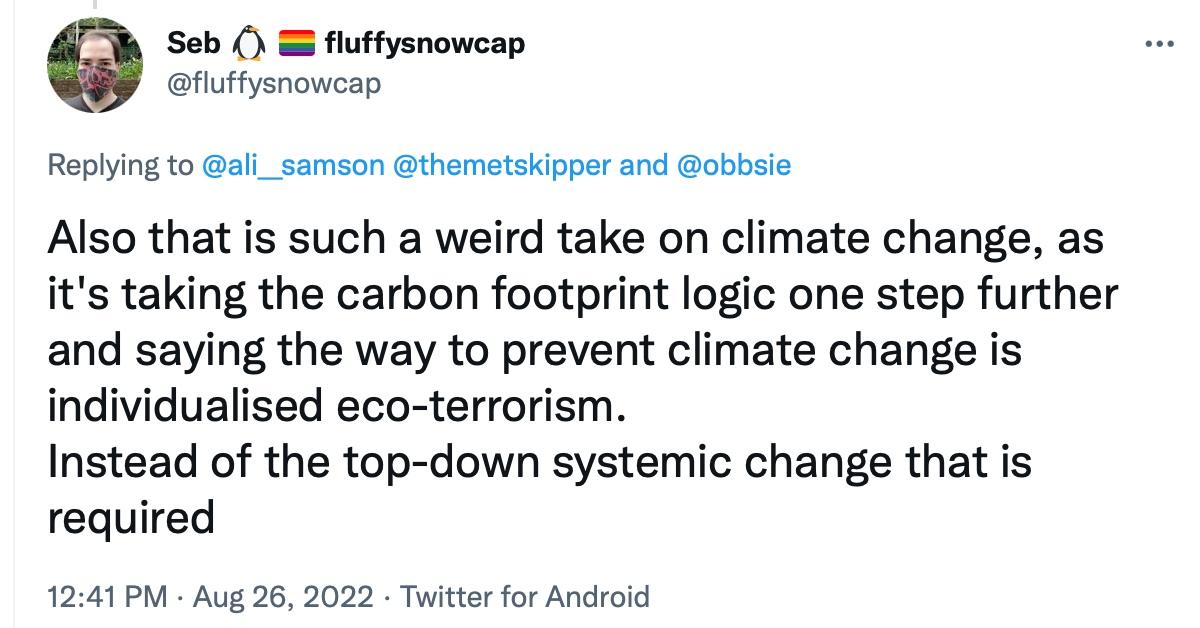What Are Eco-Terrorists? Here's What You Should Know About Environmental Extremism
Published Sept. 2 2022, 9:57 a.m. ET

Environmental activism can take different shapes and forms. A radical branch with a decades-long history advocates for the use of violence to bring attention to lesser-known causes and stand up against policies that threaten with the slow-paced destruction of the Earth's natural resources. So, what is eco-terrorism and what are eco-terrorists?
What's eco-terrorism? Let us answer your burning questions.
One branch of eco-terrorism draws on the idea that the use of violence can be justified when challenging centuries-old institutional frameworks legitimating, reinforcing, and redefining specific forms of oppression, according to Britannica.
Take, for instance, the cell nicknamed The Family, which included Josephine Sunshine Overaker, Rebecca Rubin, Joseph Dibee, and others, who were associated with the Earth Liberation Front, as per Vail Daily. The Family earned a reputation for being eco-terrorists and burning down a slaughterhouse, logging SUVs at car dealerships, and other crimes, as per the FBI.
For context, The Family is thought to be the group behind the 1998 Vail arson attacks. Described as the nation's busiest ski resort, the Vail Ski Resort in Colorado boasts multiple buildings, including at least one restaurant.
The damages came to an estimated $12 million. Oregonian describes the action as "the most destructive act of eco-sabotage in U.S. history."
The FBI cracked down on The Family in the summer of 2018, via the Oregonian. Six men and five women associated with the group were arrested.
Eco-terrorism is a loosely-defined concept referring to various animal rights and radical environmentalist groups.
According to the FBI, the first eco-terrorism and environmental extremist groups began back in the 1970s. The outlet names one of the most prevalent groups, the ALF or Animal Liberation Front, and the Earth Liberation Front (aka ELF or Elves), as examples.
"Special interest terrorism differs from traditional rightwing and leftwing terrorism in that extremist special interest groups seek to resolve specific issues, rather than effect widespread political change," the FBI states. "Such extremists conduct acts of politically motivated violence to force segments of society, including the general public, to change attitudes about issues considered important to the extremists’ causes."
"Generally, extremist groups engage in much activity that is protected by constitutional guarantees of free speech and assembly," the archive article adds. "Law enforcement only becomes involved when the volatile talk of these groups transgresses into unlawful action."
According to the FBI, eco-terrorists frequently rely on actions involving arson, vandalism, and other forms of disruption, including phone calls and attempts to halt business activities.
The Evan Mecham Eco-Terrorist International Conspiracy or EMETIC also made the headlines for engaging in a form of vandalism not permitted by the law. The group, which is made up of three members — Mark Davis, Margaret Millet, and Marc Baker — caused $50,000 worth of damage by ruining the "cables and pylons" that "supported the main ski chairlift" of the Arizona Snowbowl in Flagstaff, Ariz. in October 1987.
